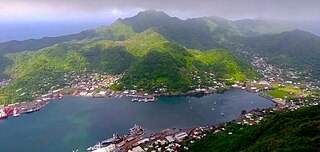
Pago Pago is the capital of American Samoa. It is in Maoputasi County on Tutuila, which is American Samoa's main island.
This is an overview of 1922 in film, including significant events, a list of films released and notable births and deaths.
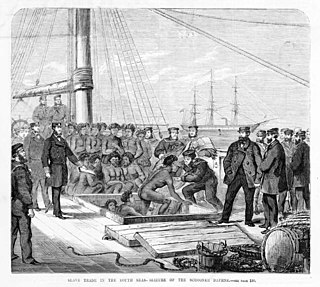
Blackbirding is the coercion of people through deception or kidnapping to work as slaves or poorly paid labourers in countries distant from their native land. The practice took place on a large scale with the taking of people indigenous to the numerous islands in the Pacific Ocean during the 19th and 20th centuries. These blackbirded people were called Kanakas or South Sea Islanders. They were taken from places such as Papua New Guinea, the Solomon Islands, Vanuatu, Niue, Easter Island, the Gilbert Islands, Tuvalu, Fiji, and the islands of the Bismarck Archipelago amongst others.
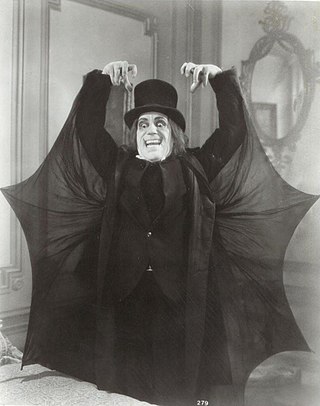
A lost film is a feature or short film in which the original negative or copies are not known to exist in any studio archive, private collection, or public archive. Films can be wholly or partially lost for a number of reasons. Early films were not thought to have value beyond their theatrical run, so many were discarded afterward. Nitrate film used in early pictures was highly flammable and susceptible to degradation. The Library of Congress began acquiring copies of American films in 1909, but not all were kept. Due to improvements in film technology and recordkeeping, few films produced in the 1950s or beyond have been lost.

The Trail of Hate is a 1917 American silent drama film that portrayed the military exploits and personal rivalries of two United States Army officers stationed in the American West and later in the Philippines. The production starred John Ford, who at that time was credited as "Jack Ford". Currently classified as a lost film, this two-reel short is identified by some biographers of John Ford and in many filmographies, both in print and online, to be his second release as a director. He is also credited in various sources for writing the film's screenplay or "scenario". Other Ford biographers, however, most notably American director and film historian Peter Bogdanovich, credit this production's screenplay and its direction to John's older brother Francis Ford.

Around the World in 18 Days is a 1923 American silent film serial directed by B. Reeves Eason and Robert F. Hill. A total of twelve episodes of the serial were released. The film is now considered lost.

Perils of the Wild is a 1925 American silent adventure film serial directed by Francis Ford. The film is considered to be lost. This serial was based on the 1812 novel The Swiss Family Robinson by Johann David Wyss.
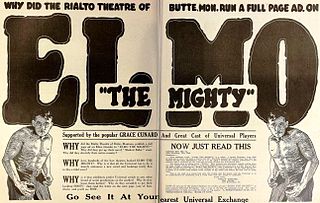
Elmo the Mighty is a 1919 American silent Western film serial directed by Henry MacRae and J. P. McGowan. The film is now considered to be lost.
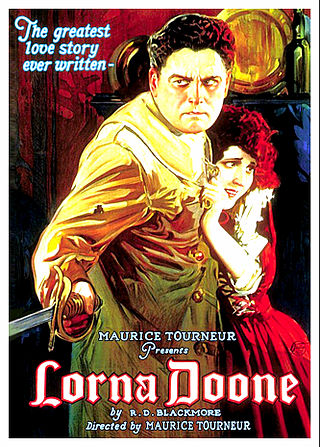
Lorna Doone is a 1922 American silent drama film based upon Richard Doddridge Blackmore's 1869 novel of the same name. Directed by French director Maurice Tourneur in the United States, the film starred Madge Bellamy and John Bowers.

American Samoa is an unincorporated territory of the United States located in the South Pacific Ocean, southeast of the island country of Samoa. Centered on 14.3°S 170.7°W, it is east of the International Date Line and the Wallis and Futuna Islands, west of the Cook Islands, north of Tonga, and some 500 kilometers (310 mi) south of Tokelau. American Samoa is the southernmost territory of the United States and one of two U.S. territories south of the Equator, along with the uninhabited Jarvis Island.

Captain Calamity is a 1936 American South Seas adventure film directed by John Reinhardt and starring George Houston released by Grand National Pictures. It was filmed in an early colour process called Hirlicolor at Talisman Studios and Santa Catalina Island, California.
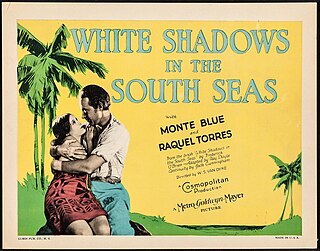
White Shadows in the South Seas is a 1928 American synchronized sound film adventure romance directed by W.S. Van Dyke and starring Monte Blue and Raquel Torres. It was produced by Cosmopolitan Productions in association with MGM and distributed by MGM. While the film has no audible dialog, it was released with a synchronized musical score with sound effects using the sound-on-film Western Electric Sound System process. Loosely based on the travel book of the same name by Frederick O'Brien. This film is important historically for being the first sound MGM film to be released as it featured a pre-recorded soundtrack. Clyde De Vinna won an Academy Award for Best Cinematography.

Aloma of the South Seas is a lost 1926 American silent comedy drama film starring Gilda Gray as an erotic dancer, filmed in Puerto Rico and Bermuda, and based on a 1925 play of the same title by John B. Hymer and LeRoy Clemens.
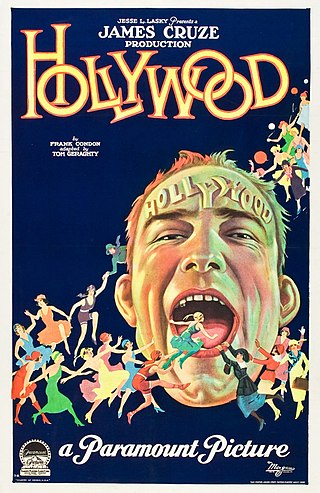
Hollywood is a 1923 American silent comedy film directed by James Cruze, co-written by Frank Condon and Thomas J. Geraghty, and released by Paramount Pictures. The film is a lengthier feature follow-up to Paramount's own short film exposé of itself, A Trip to Paramountown from 1922.

The Lotus Eater is a 1921 American silent romantic drama film produced and directed by Marshall Neilan and released through Associated First National. The Lotus Eater starred John Barrymore with Colleen Moore as the female lead. The Lotus Eater is now considered lost.
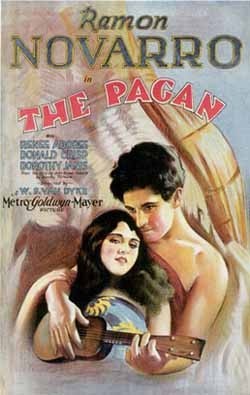
The Pagan is a 1929 synchronized sound romantic drama filmed in Tahiti and produced and distributed by Metro Goldwyn Mayer. While the film has no audible dialog, it was released with a synchronized musical score with sound effects using both the sound-on-disc and sound-on-film process. Both director W.S. Van Dyke and cinematographer Clyde De Vinna had previously visited Tahiti in 1928 to film White Shadows in the South Seas. The Pagan stars Ramón Novarro.

Ebb Tide is a 1922 American silent adventure film produced by Famous Players–Lasky and distributed by Paramount Pictures, directed by George Melford, and based on the 1894 novel The Ebb-Tide by Robert Louis Stevenson and his step-son Lloyd Osbourne. The story had been filmed before in 1915 by the Selig Polyscope Company.

Lovers and Luggers is a 1937 Australian film directed by Ken G. Hall. It is an adventure melodrama about a pianist who goes to Thursday Island to retrieve a valuable pearl.

Black Paradise is a 1926 American silent adventure film directed by Roy William Neill and starring Madge Bellamy, Leslie Fenton, and Edmund Lowe.


















